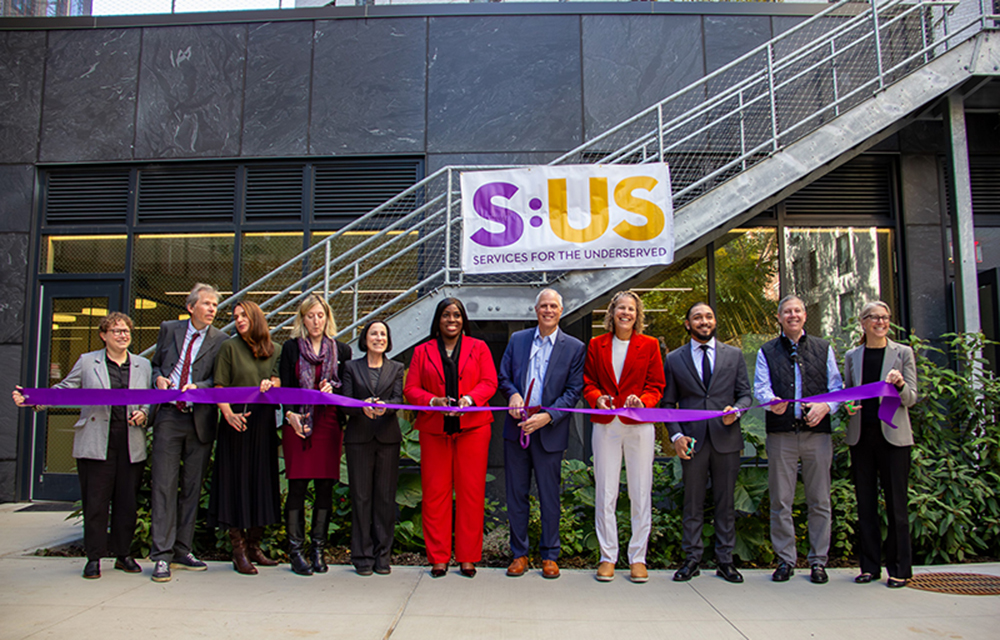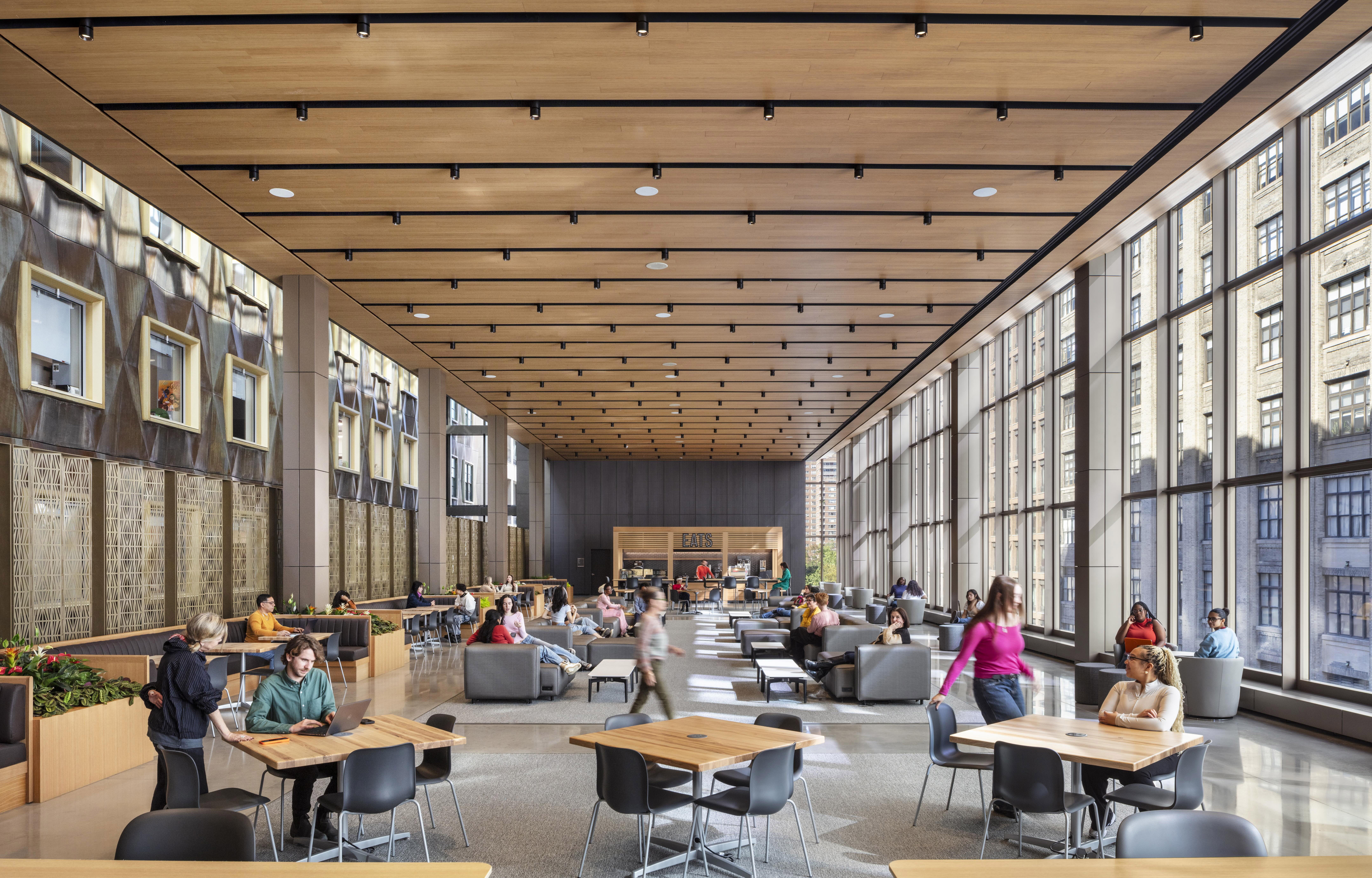News:
Construction Design & Engineering
Posted: May 12, 2014
Beyond compliance - creating spaces that are welcoming to the hearing impaired public
Compliance with the Americans with Disabilities Act (ADA) is often viewed as a set of tedious requirements one must get past in a big project. Light switches are moved a bit lower, protruding obstacles are recessed into walls, and a few infrared (IR) or radio-frequency (RF) emitters for assistive listening systems are tacked onto the walls of auditoriums and meeting spaces.
However, there is a dramatic difference between creating spaces that accommodate those with disabilities and creating spaces that are welcoming to all visitors. Accommodation - and compliance with accessibility laws - is an important first step in creating an award winning, visually and physically appealing and welcoming space. Shen Milsom & Wilke (SM&W) has developed strategies to achieve these results.
For example, compliance with the ADA for the hearing impaired simply requires that some form of assistive listening be installed in any public space where amplified sound is used. To go beyond mere compliance can result in spaces that are welcoming to those with various impairments, as well as the unimpaired public.
Hearing loss is a growing problem in America today, with the National Institute of Health reporting an estimated 20% of Americans having some form of hearing loss. With continued exposure to loud noises and the prevalence of personal music players this can only be expected to increase for those fortunate enough to have unimpaired hearing, a number of on-line simulators are available to demonstrate how hearing loss affects the experience of listening to sound, particularly voice intelligibility. For one example, see this simulator available free of charge from University College London.
This isn't the way our clients want the public to experience events in their spaces. It isn't the way we want our friends and neighbors to experience events. The very best results for end-users - the ones that leave people saying "wow" and having a genuine emotional reaction - should be our goal. This is a goal we more often reach using loop systems.
A loop system, formally referred to as an Audio Frequency Inductive Loop System (AFILS) is, at its most basic level, a simple application of the electromagnetic principle that an electric current creates a magnetic field, and that a changing magnetic field can, in turn, create an electric current. In this case a loop of wire around the room to be "looped" is driven by the same audio system as the room speakers. This will create a magnetic current which will, in turn, induce an electric current in tight coils of wire (T-coils) in listeners' hearing aids. While not all hearing aids are equipped with T-coils, the prevalence of this technology has greatly increased over the past years.
At present 70% of hearing aid models are equipped with T-coil. Those without T-coil-equipped hearing aids can make use of a belt-pack receiver.
This isn't a new idea. Applications of AFILS go back as far as the 1970s, when some users looped telephone wire around home-theaters and connected it to the same amplifier they would use for loudspeakers. This resulted in an overall poor audio experience which soured quite a few people on the technology. This is a shame, as it's greatly improved over the years.
It's also a field in which the U.S. is lagging. In Europe there's been much faster adoption of loops, where they are the prevalent form of assistive listening. Here in the U.S. we still rely too much on infrared and radio systems.
The biggest weakness of many systems that are compliant is that there is often a barrier to using them. Users need to first know that there is a system in place, and then figure out from whom to request hardware, and then figure out how to use it. A loop system removes one of these barriers by allowing hearing-aid equipped users to use their own equipment rather than rely on external hardware. A highly recommended and less technical second step would be the installation of standard signage announcing the existence of an ALS system. This is a standard, universal symbol in all languages. It also should serve as an excellent reminder that hardware only represents part of the solution. For accessibility, ease of use, and for the ability to seamlessly use one's own equipment, loop systems are the recommended choice by audiologists.
It also opens up opportunities not available with infrared or radio-frequency types of systems such as ticket counters, rail stations, and digital kiosks. These are examples of places in which one can't hand out receivers, but would still want to welcome guests with hearing impairment. Again, when someone who needs assistive listening experiences it in a place where it would not be expected it can be a welcoming and even emotional experience.
There's obviously more, both from a technical and design perspective. For our clients, SM&W's team of consultants is well-versed in the advantages and capabilities of hearing loop and other assistive listening technologies. For our architect partners, SM&W offers a one credit (one hour) health and welfare AIA-approved continuing education course (AIA CES).
Content will include:
* Regulatory requirements
* Advantages of loop, RF, and IR systems
* Determining in which spaces such systems are appropriate
* Building requirements and architectural considerations in AFILs systems.
* How to identify an area as "looped" for the benefit of potential users.
What can you expect to learn from the SM&W AIA CES Course?
The audience will learn how to make your projects more than just ADA compliant, and how to make your spaces welcoming and accessible to all people - those with hearing impairment and those who are not yet hearing impaired.
Leonard Suskin is an associate in the AV discipline at Shen Milsom & Wilke, New York, N.Y.
MORE FROM Construction Design & Engineering
Troutbrook expands with boutique condo project and Marriott Fairfield Inn & Suites renovation
Brooklyn, NY For more than 25 years, Troutbrook/Freud Development has remained focused on executing design-driven projects across the city. Its latest ventures reflect both a continued push into boutique residential development and an expansion








.gif)
.jpg)
.gif)
.gif)